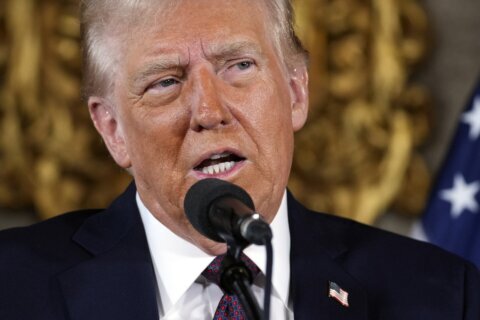When it comes to profitable investing, nothing quite matches a long-term approach. Consider investing icon Warren Buffett, who once said his favorite holding period is “forever.” Or look at statistics from investment advisor Morningstar that state actively managed funds have a less than 50% rate of outperforming vanilla, passive investment vehicles — meaning you have a better chance of winning a coin flip than picking a tactical fund that will beat the general performance of the stock market.
[Sign up for stock news with our Invested newsletter.]
Long-term ETF investing in low-cost index funds isn’t particularly flashy. But it simply makes sense. That’s true for new investors looking for a cost-effective approach as well as older folks who still have a good 20 to 30 years of expenses to shoulder between retirement and their end of life.
So forget about chasing the latest hot stocks or cryptocurrency meme coins. Instead, focus on these seven long-term ETFs to buy and hold for reliable performance in the years ahead:
| ETF | Assets Under Management | Expense Ratio |
| Vanguard S&P 500 ETF (ticker: VOO) | $528 billion | 0.03% |
| Schwab U.S. Small-Cap ETF (SCHA) | $18 billion | 0.04% |
| iShares Core S&P Mid-Cap ETF (IJH) | $91 billion | 0.05% |
| Vanguard Information Technology ETF (VGT) | $77 billion | 0.10% |
| Vanguard High Dividend Yield ETF (VYM) | $59 billion | 0.06% |
| Vanguard Total International Stock ETF (VXUS) | $78 billion | 0.08% |
| iShares Core U.S. Aggregate Bond ETF (AGG) | $120 billion | 0.03% |
Vanguard S&P 500 ETF (VOO)
Assets: $528 billion Expense Ratio: 0.03%, or $3 annually on every $10,000 invested
When it comes to the best long-term ETFs, VOO is a clear leader as one of the largest funds by assets among any fund on the market. It’s linked to the S&P 500 index of the largest U.S. companies, which is not only the world’s most closely followed benchmark of stocks but the simplest place to look for a list of Wall Street leaders. Top holdings at present include trillion-dollar tech stocks such as Apple Inc. (AAPL) and Microsoft Corp. (MSFT) alongside leading health care stocks like Eli Lilly & Co. (LLY) and financial behemoth JPMorgan Chase & Co. (JPM).
This leading Vanguard fund offers great liquidity and a rock-bottom expense ratio, making it a logical choice for investors interested in focusing on the top U.S. stocks. It’s worth noting that tech stocks tend to dominate the S&P, however, with about 32% of the fund’s assets tied up in the sector. But for investors who don’t mind a little extra tech, this long-term ETF has a lot to offer.
Schwab U.S. Small-Cap ETF (SCHA)
Assets: $18 billion Expense Ratio: 0.04%
Another great long-term ETF is this Schwab fund that is focused on small-cap stocks, with an average market capitalization of about $3.7 billion across roughly 1,750 total holdings. Though these are smaller companies in the portfolio of this long-term ETF, the larger number of total holdings in this ETF makes for an incredibly diversified lineup. When it comes to long-term investing, that’s an important feature to smooth out some of the volatility that may pop up from month to month. What’s more, SCHA spreads assets more evenly around the top sectors with industrials, technology and financial services all at between about 16% and 17% each.
Top companies in this long-term ETF at present include translation software specialist Duolingo Inc. (DUOL), asset manager Stifel Financial Corp. (SF) and nuclear energy specialist BWX Technologies Inc. (BWXT).
[READ: 7 Best Electric Vehicle ETFs to Buy]
iShares Core S&P Mid-Cap ETF (IJH)
Assets: $91 billion Expense Ratio: 0.05%
A good way to split the difference between mega-cap leaders and smaller upstarts, IJH focuses on stocks in that middle ground between these two types of investments. Top holdings include health care diagnostics firm Illumina Inc. (ILMN) and engineering specialist EMCOR Group Inc. (EME), two stocks that are both above $20 billion in market value. The average size of stocks is about $9 billion, and top sectors by weight include industrials (21%), financial services (16%) and consumer discretionary stocks (14%). If you want the potential upside of emerging companies but don’t want to go too small for fear of the volatility and risk, IJH is a good compromise for long-term investment portfolios.
Vanguard Information Technology ETF (VGT)
Assets: $77 billion Expense Ratio: 0.10%
The largest technology-specific ETF on Wall Street, this Vanguard index fund is a simple way to play the most growth-oriented industry out there. There’s a good mix of companies in this portfolio of more than 300 different tech stocks, but obviously there’s a bit more risk as it’s not diversified beyond this one sector. That makes it much more exposed to trends unique to technology firms — but given the historical outperformance of this sector, that may ultimately wind up being a very good thing. Investors can get exposure to top Silicon Valley leaders like Apple but also a long list of smaller software, artificial intelligence and cloud computing companies. In the long run, this mix of big names along with lesser-known startups provides broad exposure to the long-term growth of the technology sector.
Vanguard High Dividend Yield ETF (VYM)
Assets: $59 billion Expense Ratio: 0.06%
On the flip side of the risk vs. reward spectrum are dividend stocks. This high dividend stock fund from Vanguard prioritizes stable blue-chip stocks with reliable revenue and profits, which in turn fuels reliable dividends. While admittedly these are slow-moving stocks that don’t have the growth potential of tech startups, VYM makes up for it with an attractive 2.8% dividend yield — double the average yield of the typical S&P 500 stock. Top holdings include chipmaker Broadcom Inc. (AVGO), financial giant JPMorgan and Big Oil icon Exxon Mobil Corp. (XOM).
Vanguard Total International Stock ETF (VXUS)
Assets: $78 billion Expense Ratio: 0.08%
For a long-term investing strategy, it’s worth looking beyond just domestic stocks to enjoy both the growth potential of foreign markets as well as the diversification these regions can provide. The Vanguard Total International Stock ETF is a go-to fund to provide simple and cost-effective international exposure, with more than 8,600 stocks in its portfolio right now. This provides a mix of familiar and established companies such as semiconductor foundry Taiwan Semiconductor Manufacturing Co. Ltd. (TSM) and European health care firm Novo Nordisk (NVO) along with smaller emerging market plays. The portfolio’s focus is spread widely across the globe, too, with Japan the top region at just under 16% exposure, followed by the United Kingdom at 9% and then China at 8%.
iShares Core U.S. Aggregate Bond ETF (AGG)
Assets: $120 billion Expense Ratio: 0.03%
Just as geographic diversification can be important when building a portfolio of the best long-term ETFs, so too is diversification across asset classes. That’s what AGG provides, with a mammoth portfolio of more than 12,000 “investment grade” bonds. That includes rock-solid U.S. Treasurys along with loans to leading blue-chip stocks and securitized mortgage debt backed by the federal government. You’ll find just about any kind of bond in here, save for risky loans to troubled companies that are classified as “junk” bonds. This low-risk approach may not provide the same growth potential as the stock market, but it provides unmatched stability in the long-term. And with a generous yield of 3.4% over the last 12 months, AGG provides an income stream that’s hard to match via common stocks without taking on significantly higher risk.
More from U.S. News
7 Best Fidelity ETFs to Buy Now
10 Best Investments for the Last Quarter of 2024
9 Best ETFs to Buy for a Recession
7 Best Long-Term ETFs to Buy and Hold originally appeared on usnews.com
Update 10/31/24: This story was previously published at an earlier date and has been updated with new information.







